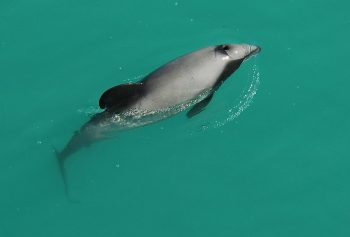California sea lion (Zalophus californianus) belongs to the family of eared seals. It is an intelligent animal which is why it is commonly used as a ‘circus seal’.
In size and appearance, males are very different from the female California sea lions. This is known as sexual dimorphism.
The color of the pelage (coat or fur of a mammal) in juveniles and female California sea lions is orange-brown. The adults and pups have pale-to-dark brown pelage. The neck and crest of the California sea lion are powerfully built.
The average length of a male California sea lion is up to 7.9 feet and weighs around 770 pounds. The female sea lions measure about 5.9 feet long and weigh around 220 pounds.
It has an average lifespan of around 30 years.

OLYMPUS DIGITAL CAMERA
Breeding occurs from May to August. The pups are born in June or July. A mother sea lion suckles her pup for up to 1 year.
They are distributed across the western shores of North America. They are found all the way from southeastern parts of Alaska to central Mexico.
For breeding, California sea lions are flocked together in rookeries (group name of seals) of 2 to 20 animals on rock-strewn coasts and sandy shorelines. They may also gather on harbors, marinas and even freshwater.
The primary diet of these sea lions consists of fish and squid. Among these, the most common species are opalescent inshore squid, Jack Salmon, lampreys, shortraker rockfish, herring and anchovies. However, they eat a lot of other food as well, like clams.
Sea lions are very fast and are capable to move round at a top speed of 25 mph. In water, they can dive up to a depth of 899 feet.
The killer whales and the great whites are the predators of the sea lions.





